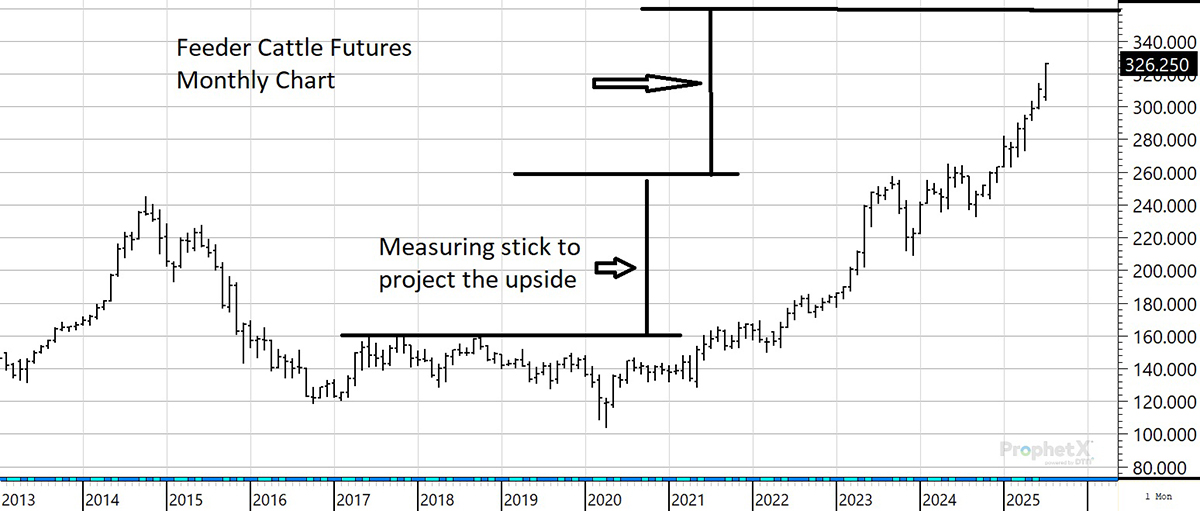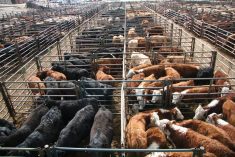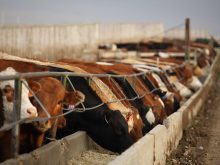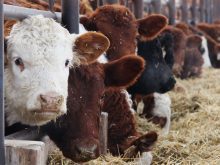For the week ending July 12, western Canadian feeder cattle markets were relatively unchanged from two weeks earlier. There were no sales for the week ending July 5 and there was only a handful of sales from July 7-11.
Market reports suggest that grass yearlings are starting to come on stream, albeit in limited numbers.
There is no shortage of buying interest for the efficient weight gain cattle.
Read Also

Canadian Food Inspection Agency slammed for handling of bovine tuberculosis case
The federal government leans heavily on producers to “take one for the team” and risk their livelihoods without any reassurance of support.
Calf numbers are limited and the quality is quite poor at this time of year. A fair amount of “clean-up” cattle are available, but these smaller packages are discounted heavily. Larger quality packages of calves are selling for deferred delivery, which is a more accurate description of the market.
Alberta packers were buying fed cattle in the range of $294-$295 per hundredweight f.o.b. feedlot in the Lethbridge area.
The break-even pen close-out value for July is in the range of $265-$275 per cwt. Fall-placed calves are at the lower end of the range, while spring yearlings become profitable above $270 per cwt.
It is important to know that the break-even pen close-out values for August and September are in the range of $285-$292 per cwt. For October through December, the break-even pen closeouts are in the range of $295-$305 per cwt.
If margins turn negative later in fall, the feeder market may soften.
Feedlot operators often base the purchase price of replacements on the current price of fed cattle instead of the deferred live cattle futures. The December live cattle futures are reflecting an Alberta fed cattle price around $290-$295 per cwt. f.o.b. Lethbridge feedlot.
In central Saskatchewan, mixed steers off grass with full pre-conditioning weighing 1,050 lb. were valued at $392 per cwt. f.o.b. farm for last half September delivery.
At the Ponoka, Alta., sale on July 9, a smaller package of tan steers weighing 1,000 lb. off grass and mineral with full health data traded for $399. At the same sale, an eight-pack of 812 lb. red steers off grass and mineral diet with full preconditioning records dropped the gavel at $459.
North of Calgary, a smaller package of Angus blended heifers off grass weighing 815 lb. were valued at $408 per cwt.
In central Alberta, smaller packages of 700-715 lb. mixed steers were trading in the range of $498-$505 per cwt. These cattle appeared to be off grass and fully weaned or semi-weaned. This category was hard to define.
Northwest of Saskatoon, a larger package of black mixed steers coming off grass and mothers weighing 650 lb. were valued at $542 last half October delivery.
North of Calgary, a smaller package of larger frame, thin, Charolais based steers averaging 510 lb. with limited background information sold for $618 per cwt. in the ring.
Earlier in June, calf prices for deferred delivery were discounted approximately $20 per cwt. to current sales at the ring. We now find that the market has evened out with nearby and deferred feeder markets trading at equivalent value.
Strength in the June 2026 and August 2026 live cattle futures have lifted the price structure for feeder cattle for the final quarter of 2025. At the time of writing this article, talk in the trade was that calves for August and September would be about $20-$30 per cwt. higher by the end of July.
When the Canadian markets experience thin volumes, feedlot operators in Alberta focus on prices south of the border.
For the week ending July 12, major U.S. markets such as Tulsa, Oklahoma, reported that steer calves were up US$10-$15 per cwt. from seven days earlier. Some packages of steer calves traded as much as $20 per cwt. higher compared to the previous week. Heifer calves were up $5-$10 per cwt. on average with certain quality packages jumping $15 per cwt. week over week.
The United States closed the border to Mexican cattle on May 11 in an effort to combat New World screwworm. A reopening process started July 7 under a phased reopening of select southern border ports. On July 10, the U.S. cancelled the potential opening after a new case was reported in Ixhuatlan de Madero, which is in the state of Veracruz and north of Mexico City.
The screwworm infestation is now one Mexican state away from crossing into Texas, and the U.S. border is closed indefinitely to Mexican cattle.
In a normal year, monthly Mexican feeder cattle exports to the U.S. would average 120,000 head, so this is a serious change in the fundamentals.
The CME composite price is the official cash settlement price for the CME feeder cattle futures at contract final settlement. Figures have been calculated by the CME Group from prices reported by the U.S. Department of Agriculture.
We had a discussion with the USDA in late June. One point of interest is that it mentioned it doesn’t expect significant heifer retention from the U.S. cow-calf producer.
The slaughter mix and heifer feedlot placements do not confirm that ranchers are expanding the herd. From January through May, the U.S. beef cow slaughter was down 228,000 head from last year. The 2025 beef cow slaughter is expected to finish 2.5 to 2.6 million head, down from the 2024 processed number of 3.142 million head. This is sufficient to result in a minor year-over-year increase in the calf crop for 2025.
In Western Canada, our straw-poll survey of cow-calf producers suggests that there will be about 40,000 to 50,000 head of heifers held back for herd building.
In central and southern Alberta, cow-calf pairs appear to be topping out at $7,000. Mixed quality cow-calf pairs are trading in the range of $5,000 to $5,500.
During the second week of July, Lethbridge area feedlots were buying feed barley in the range of $295-$305 per tonne delivered; Red Deer operations were showing bids from $280-$305 per tonne delivered.

The southern Alberta market is under pressure, largely due to aggressive corn offers for nearby and deferred positions.
Cattle-on-feed inventories make seasonal lows in Alberta and Saskatchewan during August and September. Domestic feed demand is waning.
We’re now estimating the Canadian barley crop at 8.7 million tonnes, up from the 2024 output of 8.1 million tonnes and in line with the 10-year average, which is also 8.7 million tonnes.
In the U.S., traders are factoring in a corn crop of 400 million tonnes, up from the 2024 crop of 378 million tonnes and up from the five-year average of 365 million tonnes.
Harvesting of Brazil’s second corn crop is now in the final stages. Analysts are expecting total Brazilian corn output to reach 150 million tonnes, up from the current USDA forecast of only 130 million tonnes and up from the year-ago crop size of 119 million tonnes.
Earlier in spring, we were expecting western Canadian feedlots to import about two million tonnes of U.S. corn during the 2025-26 crop year. December corn futures have potential to drop to $3 per bushel, which would be comparable to the 2020 lows.
At the time of writing this article, US$4.15 corn was trading at $298 per cwt. delivered in southern Alberta in mid-July. U.S. corn offers could drop to $250 per tonne delivered in Lethbridge.
Therefore, we’ve increased our import projection of U.S. corn to three million tonnes. Larger supplies of corn and barley will be supportive for the feeder market.
The cost per pound gain will be significantly less during the 2025-26 campaign in both Canada and the U.S. Keep in mind that the U.S. farmer sells 60 per cent of the corn crop from Sept. 1 to Dec. 1.
















